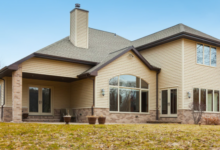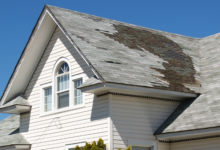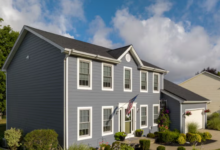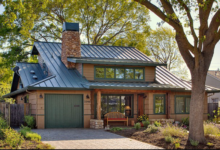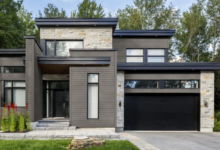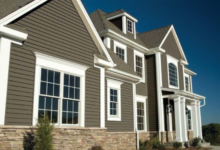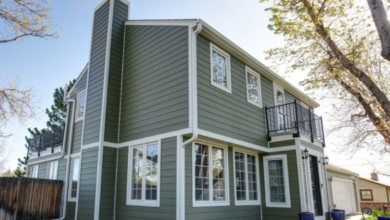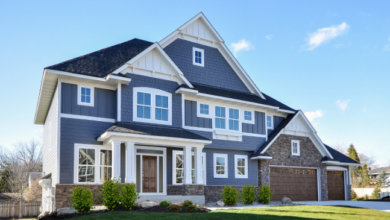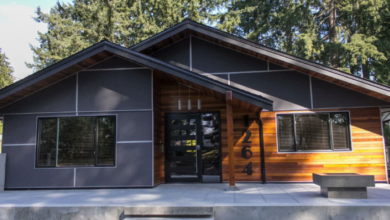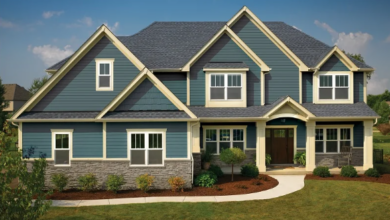Home Siding Replacement Near Me: Top Options and Benefits
Home Siding Replacement Near Me – Discover the best home siding replacement options available near you. Learn about different materials, their benefits, and how to choose the right contractor for your project.
Home Siding Replacement Near Me: Top Options and Benefits
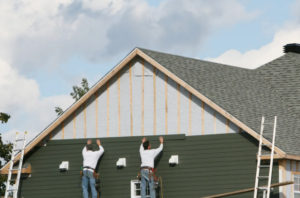
Is your home’s exterior looking worn or outdated? Replacing your siding can not only enhance curb appeal but also improve energy efficiency and protect your home from the elements. In this comprehensive guide, we’ll explore various siding materials, their benefits, and how to find the best contractors near you for a seamless installation.
Why Consider Siding Replacement?
Replacing your home’s siding offers numerous advantages:
- Enhanced Aesthetics: Fresh siding revitalizes your home’s appearance, increasing its market value.
- Improved Energy Efficiency: Modern siding materials provide better insulation, reducing energy bills.
- Increased Durability: New siding protects against weather damage, pests, and moisture infiltration.
- Low Maintenance: Upgrading can reduce the time and money spent on upkeep.
Popular Siding Materials
Choosing the right siding material is crucial. Here are some top options:
1. Fiber Cement Siding
Made from a blend of cement, sand, and cellulose fibers, fiber cement siding is known for its durability and versatility.
Pros:
- Fire-resistant
- Pest-resistant
- Low maintenance
- Long lifespan (30-50 years)
Cons:
- Heavier than other materials
- Requires professional installation
Price: Moderate to high, depending on brand and finish.
Features:
- Available in various textures and styles
- Can mimic the appearance of wood or stucco
2. Vinyl Siding
Vinyl siding is a popular choice due to its affordability and low maintenance.
Pros:
- Cost-effective
- Wide range of colors and styles
- Resistant to rot and insects
Cons:
- Less durable in extreme weather
- Can fade over time
Price: Budget-friendly.
Features:
- Easy to clean
- Can be insulated for better energy efficiency
3. Wood Siding
Wood siding offers a classic and natural appearance.
Pros:
- Attractive aesthetic
- Eco-friendly
- Can be painted or stained
Cons:
- Requires regular maintenance
- Prone to rot and insect damage
Price: Varies based on wood type; generally higher.
Features:
- Available in shingles, clapboards, and board-and-batten styles
Comparison Table of Siding Materials
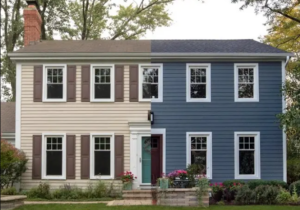
| Material | Pros | Cons | Price | Features |
|---|---|---|---|---|
| Fiber Cement | Fire and pest-resistant, low maintenance, long lifespan | Heavy, professional installation required | Moderate to high | Mimics wood or stucco textures |
| Vinyl | Affordable, low maintenance, rot and insect-resistant | Less durable in extreme weather, potential fading | Budget-friendly | Wide color range, optional insulation |
| Wood | Natural appearance, eco-friendly, customizable | High maintenance, susceptible to rot and pests | Higher cost | Various styles (shingles, clapboards) |
Benefits of Specific Siding Products
Let’s delve into some top siding products and their unique advantages:
James Hardie Fiber Cement Siding
James Hardie is renowned for its high-quality fiber cement siding.
Benefits:
- Durability: Withstands harsh weather conditions.
- Aesthetic Variety: Offers a range of styles and colors.
- Low Maintenance: Resists warping and cracking.
Where to Buy: Available through local contractors and home improvement stores.
CertainTeed Vinyl Siding
CertainTeed provides a wide selection of vinyl siding options.
Benefits:
- Affordability: Budget-friendly without compromising quality.
- Color Choices: Extensive palette to match any design.
- Energy Efficiency: Insulated options available.
Where to Buy: Purchase through certified installers or retailers.
LP SmartSide Engineered Wood Siding
LP SmartSide offers engineered wood siding combining beauty and strength.
Benefits:
- Natural Look: Authentic wood appearance.
- Enhanced Durability: Treated to resist termites and decay.
- Flexibility: Suitable for various climates.
Where to Buy: Find local dealers or contractors specializing in LP products.
How to Choose the Right Siding Contractor Near You
Finding a reliable siding contractor near you involves a combination of online research, local inquiries, and careful vetting. Here’s a step-by-step guide to help you make the right choice:
1. Start with Local Research:
- Online Searches:
- Use search engines like Google, Bing, or specialized platforms like Yelp and HomeAdvisor to find siding contractors in your area.
- Pay attention to online reviews and ratings.
- Ask for Referrals:
- Reach out to friends, family, neighbors, and colleagues who have recently had siding work done. Personal recommendations can be invaluable.
- Local hardware stores or building supply centers often have connections with local contractors.
2. Verify Credentials:
- Licensing:
- Ensure the contractor is properly licensed in your state and local area. Licensing requirements vary, so check with your local building department.
- Insurance:
- Confirm that the contractor carries liability insurance and workers’ compensation insurance. This protects you from financial responsibility in case of accidents or damage.
- Better Business Bureau (BBB):
- Check the contractor’s rating and any complaints filed with the BBB.
3. Evaluate Experience and Expertise:
- Years in Business:
- Inquire about the contractor’s experience in the siding industry. A well-established contractor is likely to have a proven track record.
- Portfolio:
- Ask to see examples of the contractor’s previous work. A portfolio can give you a sense of their workmanship and style.
- Specific Siding Expertise:
- If you have a specific type of siding in mind (e.g., fiber cement, metal), ensure the contractor has experience installing that particular material.
4. Obtain Multiple Quotes:
- Written Estimates:
- Get written estimates from at least three different contractors.
- Ensure the estimates include a detailed breakdown of materials, labor costs, and project timelines.
- Compare Quotes Carefully:
- Don’t automatically choose the lowest bidder. Consider the quality of materials, workmanship, and warranty offered.
- Be wary of unusually low bids, as they could indicate subpar work.
5. Check References:
- Contact Past Clients:
- Ask the contractor for a list of references and contact those clients to inquire about their experience.
- Ask about the contractor’s professionalism, communication, and quality of work.
6. Review the Contract:
- Detailed Contract:
- Ensure the contract includes a detailed description of the project scope, materials, payment schedule, and warranty information.
- Read the contract carefully and ask any questions before signing.
7. Consider Local Factors:
- Climate:
- Local contractors are familiar with the area’s climate and can recommend siding materials that are best suited for your region.
- Building Codes:
- Local contractors are also familiar with local building codes and regulations, ensuring that the work is compliant.
By following these steps, you can increase your chances of finding a qualified and reliable siding contractor near you.
Transactional Information: Purchasing and Installing Siding
Ready to proceed? Here’s how to buy and install your new siding:
- Consultation: Contact a local contractor for an assessment and quote.
- Material Selection: Choose the siding material and style that suits your home and budget.
- Scheduling: Arrange a convenient time for installation.
- Installation: Professionals will remove old siding (if necessary) and install the new material.
- Final Inspection: Ensure the work meets your expectations before making the final payment.
Where to Buy: Many contractors supply materials directly. Alternatively, purchase siding from home improvement stores like Lowe’s or Home Depot.
Price: Costs vary based on material, labor, and project size. Obtain detailed quotes to understand the full investment.
Use Cases: Solving Common Problems with New Siding
New siding isn’t just about aesthetics; it’s a practical solution to a range of common problems homeowners face. Here are several use cases demonstrating how new siding can address specific issues:
1. Combating Weather Damage:
- Problem: Existing siding shows signs of warping, cracking, or fading due to prolonged exposure to sun, rain, and wind.
- Solution: Installing new, durable siding, such as fiber cement or high-quality vinyl, provides enhanced protection against the elements. This prevents further damage to the underlying structure and maintains the home’s integrity.
- Especially when installing a newer siding, the house can be wrapped in newer weather protection barriers, adding a extra layer of defense against water, and air.
2. Eliminating Moisture Problems:
- Problem: Old siding is allowing moisture to seep into the walls, leading to mold growth, rot, and structural damage.
- Solution: New siding, when properly installed with adequate flashing and sealing, creates a waterproof barrier. This prevents moisture infiltration and protects the home from costly repairs.
3. Improving Energy Efficiency:
- Problem: Older siding offers little to no insulation, resulting in high energy bills and uncomfortable indoor temperatures.
- Solution: Upgrading to insulated siding can significantly improve energy efficiency. The added insulation helps regulate indoor temperatures, reducing heating and cooling costs.
4. Enhancing Curb Appeal and Property Value:
- Problem: Faded, damaged, or outdated siding detracts from the home’s appearance and reduces its curb appeal.
- Solution: New siding in a modern style and color can transform the home’s exterior, significantly enhancing its curb appeal and increasing its property value. This is especially beneficial for homeowners planning to sell their property.
5. Pest Control:
- Problem: Old wood siding can be vulnerable to termites, carpenter ants, and other pests, causing significant damage.
- Solution: Replacing wood siding with pest-resistant materials like vinyl or fiber cement eliminates this vulnerability, protecting the home from costly infestations.
FAQs
1. How often should siding be replaced?
Siding lifespan varies by material. Vinyl typically lasts 20-40 years, while fiber cement can last up to 50 years. Regular maintenance can extend these durations.
2. Can I install new siding over old siding?
In some cases, yes. However, it’s essential to assess the condition of existing siding and local building codes. Consult with a professional to determine the best approach.
3. What is the most energy-efficient siding material?
Insulated vinyl and fiber cement siding are known for their energy efficiency, helping to reduce heating and cooling costs.
4. How do I maintain my new siding?
Maintenance depends on the material. Generally, periodic cleaning and inspections for damage are recommended. Follow manufacturer guidelines for specific care instructions.
5. What is the average cost of home siding replacement?
The cost depends on the material, home size, and labor charges. On average:
- Vinyl siding: $4,000 – $15,000
- Fiber cement siding: $6,000 – $20,000
- Wood siding: $7,000 – $23,000
For an accurate estimate, request a free quote from local contractors.
Final Thoughts
Replacing your home’s siding is a smart investment that enhances aesthetics, improves energy efficiency, and increases durability. Whether you choose fiber cement, vinyl, or wood, selecting the right contractor ensures a smooth and successful installation.
